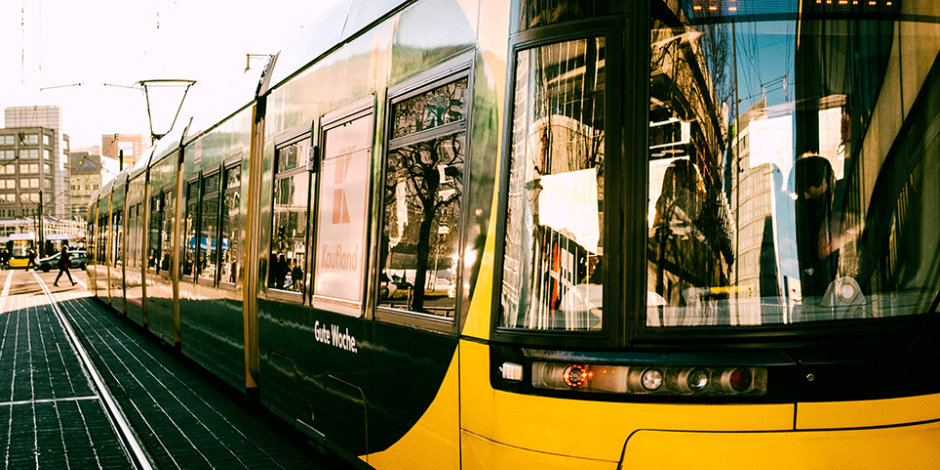Starten Sie den Audio-Text
Mit dem Audio-Player können Sie sich den Text anhören. Darunter finden Sie das Transkript.
Can you imagine a world in which public transport didn’t cost anyone anything? Would you still drive or cycle to work? Or would you be more likely to take the train, the bus, the tram or the underground instead? And when you went on holiday, would you fly or choose another means of transport? Kolja Rudzio, an economics editorRedakteur(in)editor at DIE ZEIT, reflects on this idea in the following article.
Anyone who has stood at a ticket machine in a foreign city is familiar with this: before you can get on the underground or bus, you must go through a crash course in the convolutedkompliziertconvoluted fare systemTarifsystemfare system. Which ticket is valid for which route? What time? What zone? The search for the right ticket can take longer than the journey itself. Wouldn’t it be great if you could just hop on and go?
Less hassle (ifml.)Mühe, Aufwandhassle with tickets is probably the weakest argument for free public transport, but there have been calls for this to happen for years: to abolish sth.etw. abschaffenabolish tickets and make buses and trains free for everyone. The reason usually given is that public transport is climate-friendly and reduces traffic congestionVerkehrsstautraffic congestion in cities. The more people there are on buses and trains, the better!
The idea seems appealingverlockend, reizvollappealing, but is it really? Few places in the world offer free public transport — Luxembourg or EstoniaEstlandEstonia’s capital, Tallinn, for example. The towns of Hasselt, in Belgium, and Templin, in Brandenburg, tried it for a while but later gave up on the idea. And last summer, in Germany, there was a ticket that was almost free — for €9, a monthly ticket that was valid throughout the country (as of May 2023, the price is €49 a month).
Travelling people
These projects have had mixed success, but a few patternMusterpatterns have to emergezum Vorschein kommen, sich zeigenemerged: yes, the free services increase the number of passengers. For the most part, however, it is not car drivers who switch, but pedestrianFußgänger(in)pedestrians and cyclists. This happened in Tallinn, for example, where car traffic remained almost unchanged after the introduction of the zero fare. Germany’s €9 ticket also led to a big increase in the number of train journeys — by 24 per cent during the week and as much as 105 per cent at weekends, according to the Federal Statistical Office. But, at the same time, road traffic remained unchanged from Monday to Friday, and even increased slightly at weekends. Obviously, the cheap ticket led to many additional journeys, such as more weekend excursions, which would not have taken place otherwise. This is not a bad thing, of course, but it doesn’t lead to better climate protection.
Experience also shows that people in ruralländlichrural areas in particular hardly ever switch to buses and trains. Often, there are simply no suitable connections. Getting people to give up their cars requires investment in better connections and more frequent services, but this task won’t get easier if a big source of fundingFinanzierung, Aufbringung von Mittelnfunding for local transport is eliminated. That’s why Hasselt and Templin ultimatelyletztendlichultimately ended their experiments.
Better local transport is desirable, and it should also be affordable, but free of charge is probably expecting too much.
Neugierig auf mehr?
Dann nutzen Sie die Möglichkeit und stellen Sie sich Ihr optimales Abo ganz nach Ihren Wünschen zusammen.



